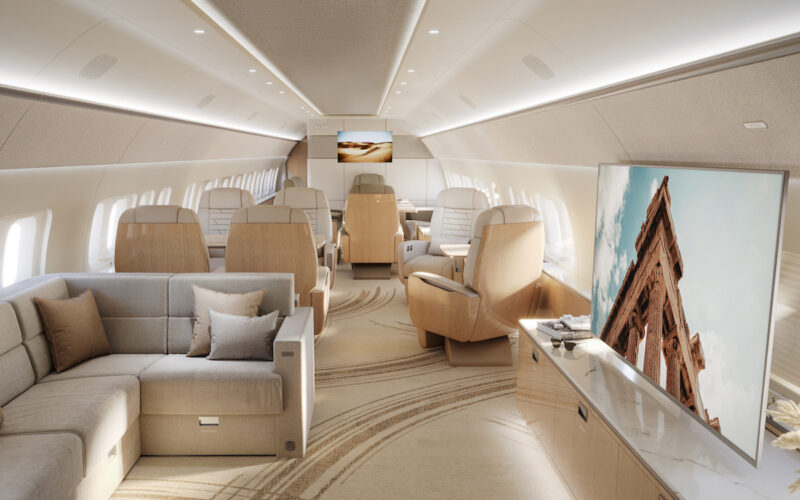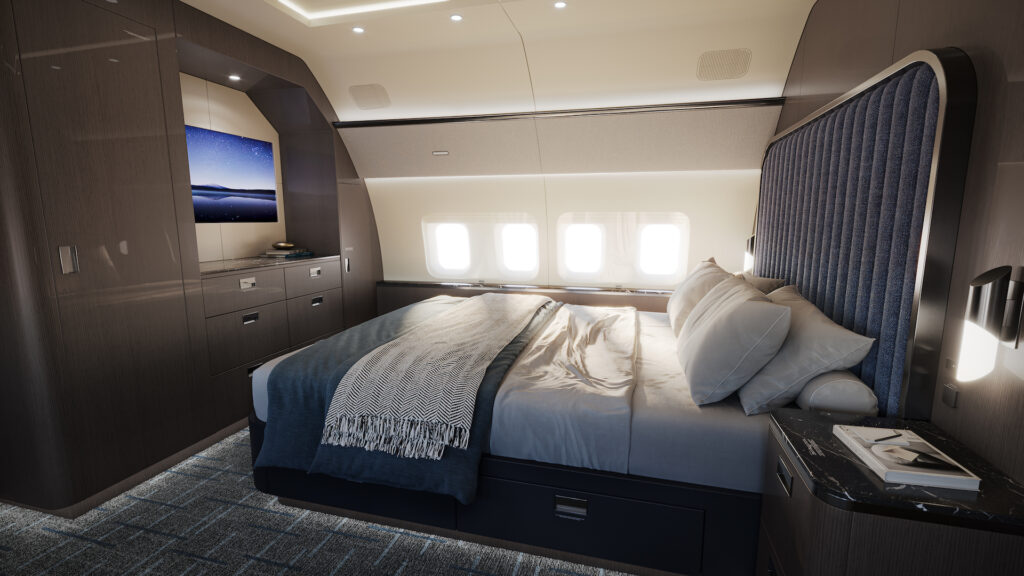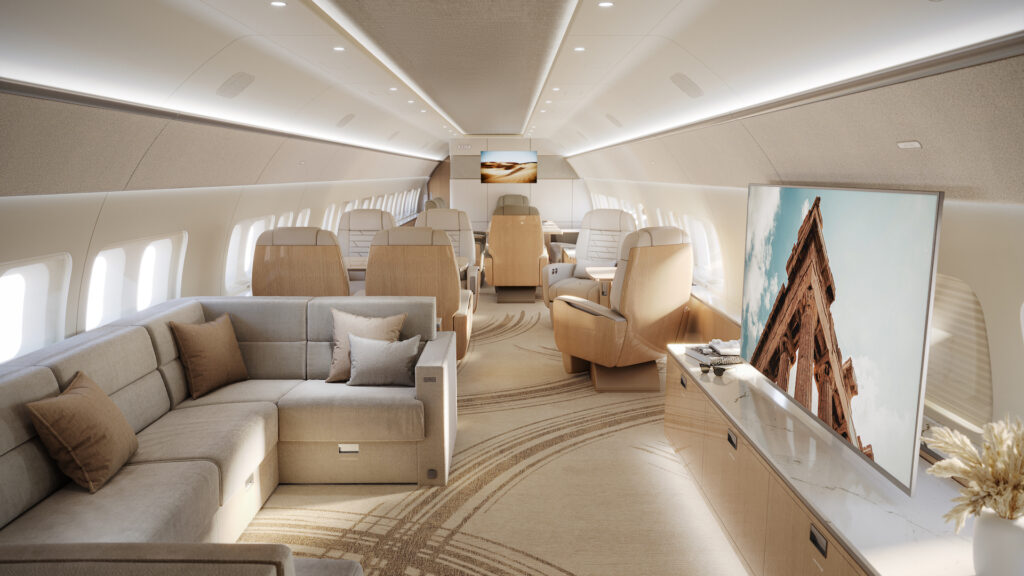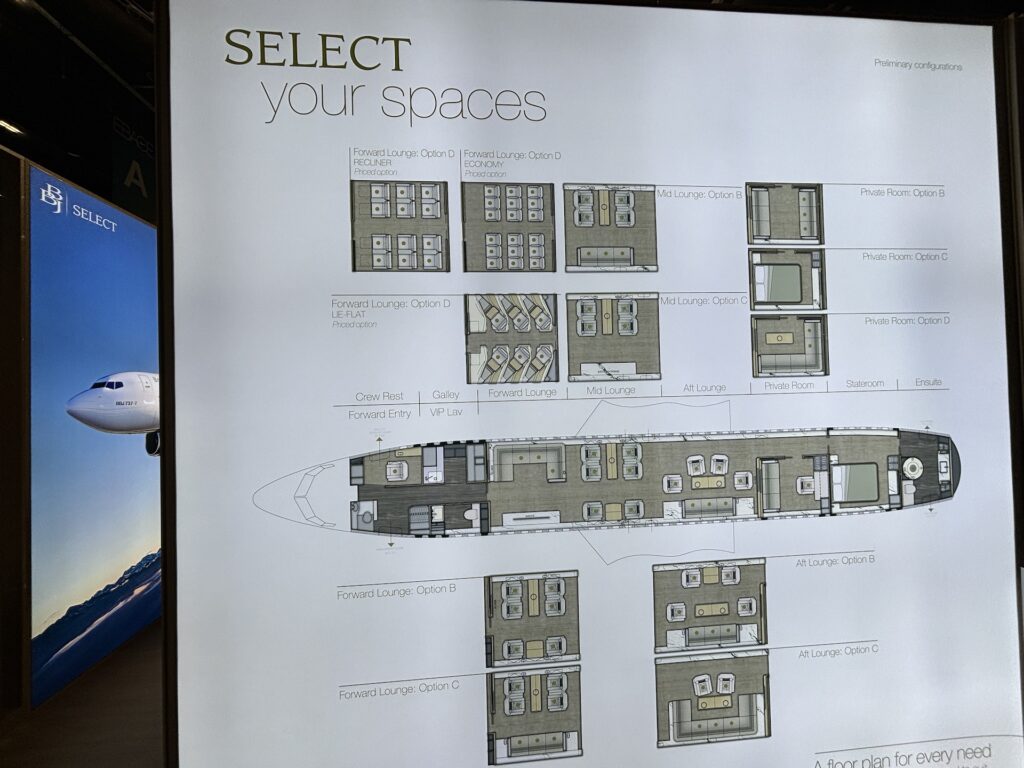Executive jets are impressive creations from a technical point of view. Those in the upper range of the market, like the Gulfstream G650 or the Bombardier Global 6000, can cruise effortlessly at close to the speed of sound. They’re capable of offering nonstop links between pretty much any two cities in the world.
But perhaps equally as impressive is the extent to which the industry has found ways to turn the confined space within the fuselage walls into a place of comfort and luxury, capable of appealing to the tastes of a highly discerning market.
In fact, executive jet interiors are a highly technical domain. From idea to delivery, a specific aircraft fitting project can take up to two years of constant interaction between multiple highly specialized parties: the OEM, the design studio, completion centers – and, of course, the customer, whose tastes and requirements provide the foundation of each project.
As with anything that involves a degree of aesthetic judgment, when it comes to executive jet cabin interiors, there’s more than one single approach available.
Aircraft manufacturers – also known as Original Equipment Manufacturers, or OEMs – provide off-the-shelf options for ‘green’ aircraft right off the assembly line. These in turn come in many variations, as it is possible to come up with countless combinations of the different cabin elements (number of seats, cabin layout, type of seats, fabrics, materials, etc).
By way of example: at the NBAA 2023 executive aviation show Boeing Business Jets presented a modular concept for its BBJ 737-7 aircraft, the executive version of the B737 MAX 7 airliner, which allows for up to 144 design combinations, obtained by mixing and matching the different pre-designed cabin modules.
BBJs and other airliner versions, with their spacious cabins, make for particularly good platforms on which to experiment with interior design, but other categories of business jets are also fertile ground for creative energy.
Overwhelmed by choice
The variations are countless: would you prefer to have a bulkhead that divides the cabin and provides areas of privacy, or do you go for a single cabin? How many seats would you like to have onboard? What kind of material do you want the harder surfaces to be made of?
One key initial factor is whether the aircraft is for private or corporate use.
Typically, a corporate user may prefer a more neutral, business-like configuration, perhaps with more seats to accommodate staff. A private owner, seeing the aircraft as an extension of his own private space, may want to add more personal touches.
However, even in the corporate field, there are different schools of thought, each with its own underpinning rationale.
Look no further than two of the largest global executive jet operators: Flexjet and VistaJet. Fractional jet operator FlexJet takes pride in its LXi Cabin Collection, which offers an assorted diversity of cabin designs to its users and leverages this surprise factor.
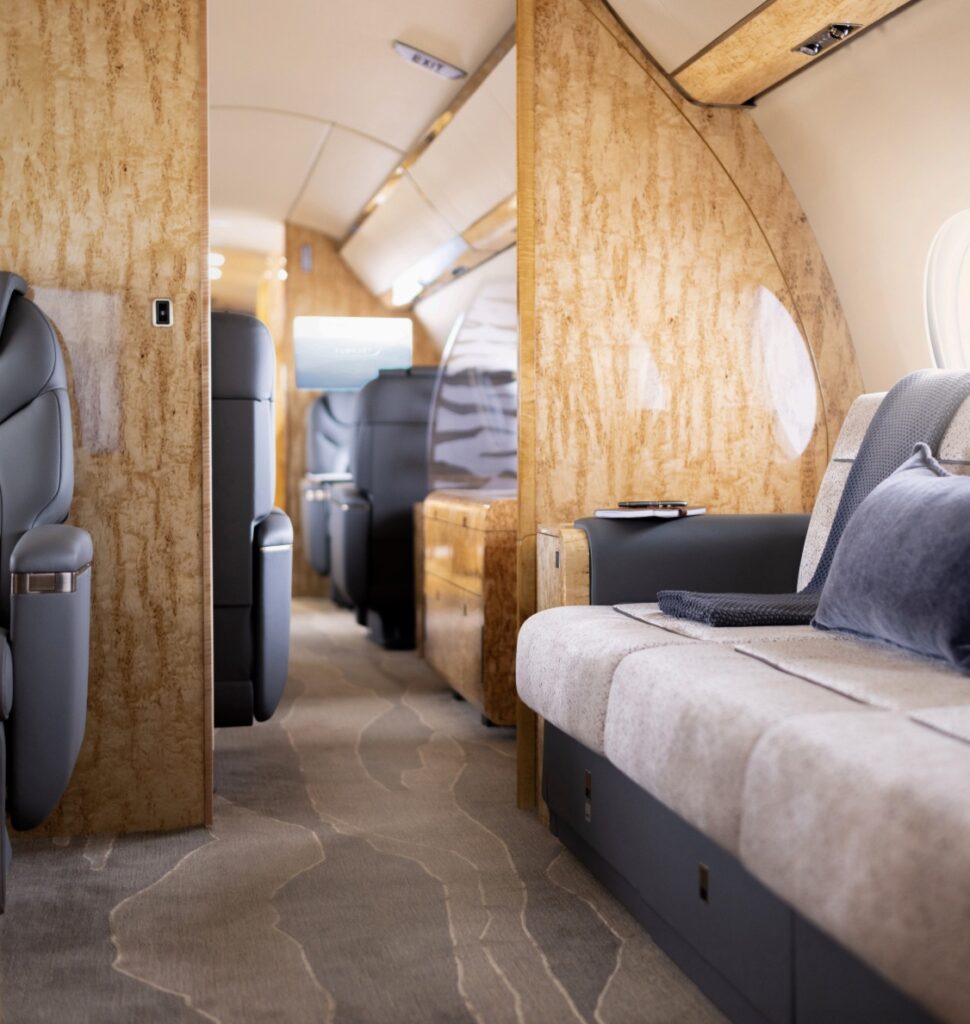
Meanwhile, VistaJet has placed design consistency at the center of its value proposition, ensuring that wherever you are in the world, your user experience remains unchanged.
“Our customers value this product consistency a lot when they travel around the world. If you are a member, you have the same experience and the same hourly rate everywhere, globally.” Vista’s US President Leona Qi explained to AeroTime during a recent Executive Spotlight interview.
“If money is not an issue, you can do pretty much everything within the limits afforded by the STCs [Supplemental Type Certifications, which regulate what can be installed on a plane – Ed. Note]” Ole Dupont Christiansen, CEO of Dupont Aviation Consulting – which has managed multiple cabin fitting projects for private owners – told AeroTime.
To illustrate this point, Dupont Christiansen shared an anecdote about a project he was involved in. The owner he was working for at the time was looking for a very specific wooden look for a new Gulfstream G650ER aircraft. Ordinary wood wouldn’t do, so Dupont Christiansen’s team started searching around, and finally managed to secure some ancient wood that had been recovered from a bog in Poland. The wood, which was several hundred years old, was then treated, certified and turned into cabin fittings at the manufacturer’s completion center.
“The ‘impossible’ just takes a bit longer!” Christiansen explained.
The result of teamwork
All major OEMs have their own design and completion centers. These also have showrooms, where prospective customers can see and compare the different concepts proposed by the manufacturer’s design team. Not only that, but they can also, crucially, touch the materials involved and get initial hands-on experience with their future aircraft.
A customer can easily spend several days at the manufacturer’s showroom making all the choices, from sizing the ‘monuments’ (that is, the furnishings and items that on the ground might equate to ‘furniture’), to selecting the digital entertainment platform for the cabin, to picking up the exact shade of veneer to be applied throughout.
If you’d like to play and experience a small-scale version of what this process is like, some manufacturers, such as Bombardier and Dassault Aviation, have released online tools that allow anyone to come up with their own cabin configuration from home.
Buyers can opt to enlist the services of an external design studio, but that’s not to say that manufacturers’ in-house design studios lack creative talent of their own.
Take for example the truly outlandish cabin interior concepts created by Embraer’s executive aviation design team for the Lineage 1000E jet (the executive version of the Embraer E190 airliner). Each created an immersive experience inspired by a specific theme, from Manhattan’s art déco and 1930s Hollywood to the world of the American West. Though none of these concepts were ever implemented on an aircraft, they are equivalent to an haute-couture dress, showcasing the skill and audacity of its creators.
Artists and designers
In a field so driven by personal taste, recourse to an external design studio could be due to prospective buyers not finding exactly what they want among the options offered by the manufacturer, or simply out of preference for a specific designer.
There have been some celebrated cases of collaborations between design and fashion brands from outside of the aviation industry. The famous luxury brand Hermès, for example, has participated in the design of Dassault Falcon aircraft and Airbus helicopters, whereas designer Phillipe Starck created a signature design for the Pilatus PC-24s operated by Luxembourg-based operator JetFly.
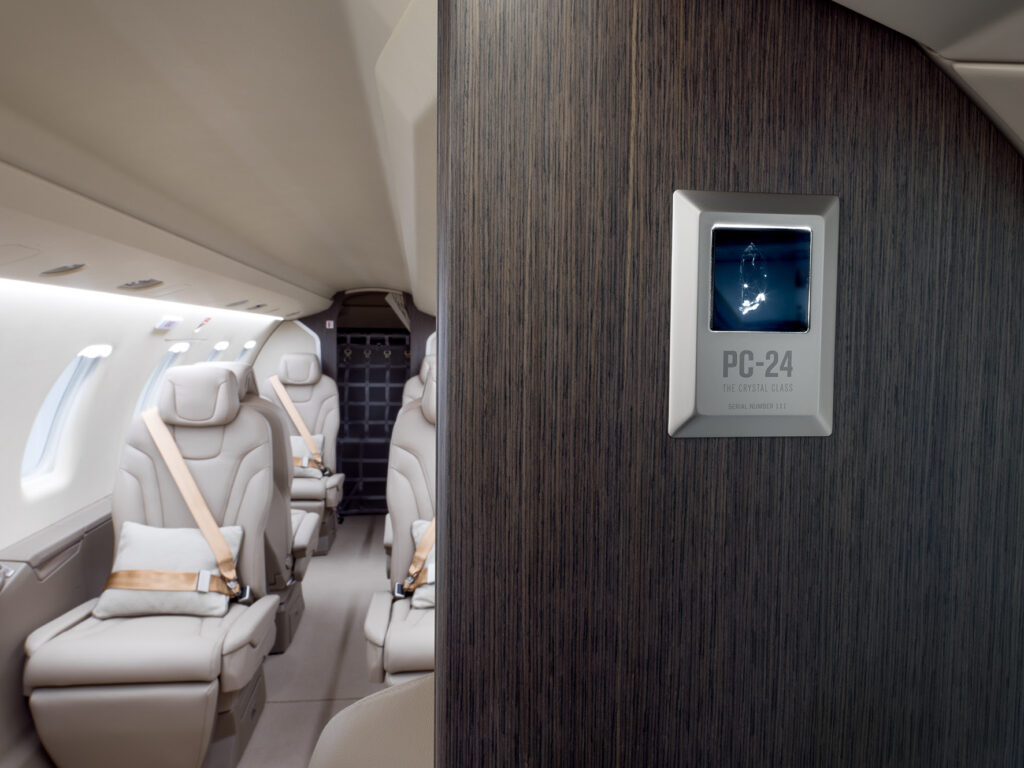
Some private jet owners wish to go one step further and customize their cabin interiors with works of art. In such cases, art consultants may get involved too.
One such business is Artelier, a British boutique art consultancy firm with a dedicated aviation practice that works on a regular basis with executive aviation users, operators and manufacturers.
Speaking with AeroTime, Artelier’s Founder and Lead Art Consultant, David Knowles explained how his firm has worked on bespoke art projects such as the commissioning of a wall-sized painting for a Bombardier Global 5000.
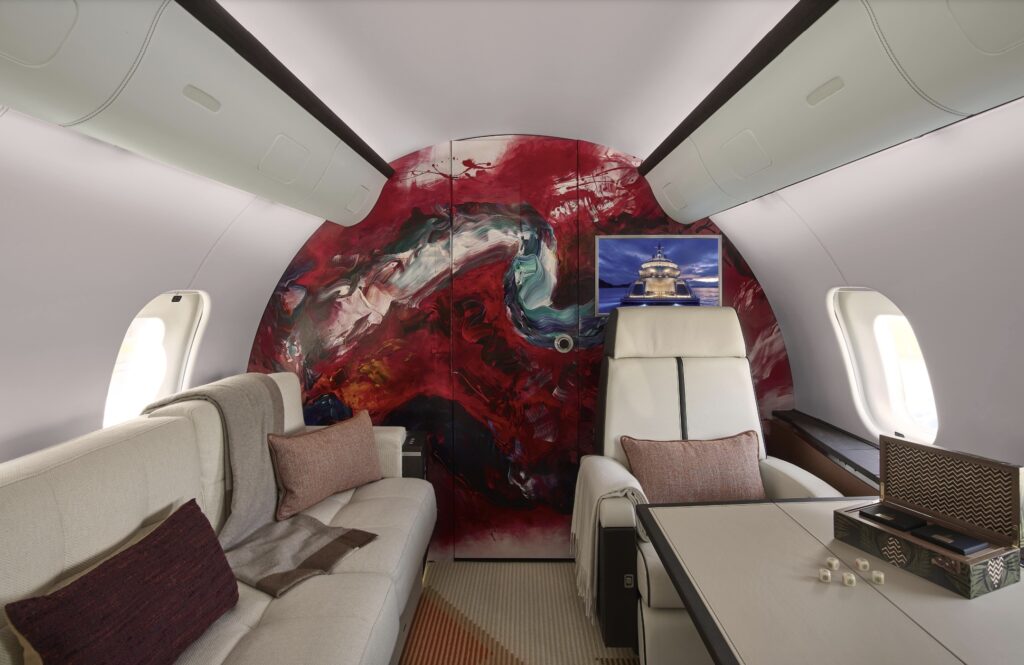
The customer wanted a work of art that reflected character and personality, and Artelier found the right contemporary artist for the job. It then worked with the artist to make sure that the resulting artwork, which was painted directly onto the aft bulkhead, met the necessary specifications, as all works of art to be installed on an airplane are required to pass tests for issues such as fire resistance and toxicity.
Every single item that is affixed to a plane needs to be certified, a matter that is usually taken care of either by the manufacturer or an organization with Design Organisation Approval (DOA) status – that is, an aviation services firm that has been approved by regulators to undertake design, production or certification projects.
With or without external intervention, though, executive jet cabin design remains a rather lengthy process. From initial idea stage to final delivery can take one to two years, often requiring frequent regular coordination meetings with all parties involved. The design decision process alone can easily last six to eight months. It is usually within this time frame that the cut-off point is reached. From that point, the selected design is signed off as final. It’s then time to move on to the completion stage.
Completion, technology and resale value
As with the design stage, executive jet owners then have a choice between having the aircraft fitted at the manufacturer’s own completion centers or sending it to one of several authorized external completion centers.
It’s at the completion center where the designer’s vision becomes a tangible reality. It is also where another important element is added to the aircraft: the digital layer.
“How fast is internet going to be?”. This is the first thing many prospective private jet buyers ask, according to Matthew Hill, VP Sales and Marketing at ALOFT Aeroarchitects, an MRO firm that focuses on the fitting and completion of large executive jets and whichn is a partner of Boeing in the launch of the aforementioned modular cabin project.
“Aviation used to lag behind the residential market when it comes to connectivity and digital entertainment, but not anymore!” explained Hill.
The digitalization of the cabin is not limited to being able to watch Netflix from 30,000ft. Streaming in-flight systems with their respective content libraries, LED lighting, control interfaces…speaking to AeroTime, Hill explained how all of this is going fully digital, which reduces the quantity of wiring needed in the cabin with the corresponding weight and complexity reduction.
“There are many executive jets out there that have been around for 20 years or more, there’s a drive to upgrade with the latest technologies” he said.
Completion centers, particularly those managed by companies independent from the OEMs, also handle a fair number of cabin retrofits. As executive jets change hands fairly often, giving the cabin a regular face-lift can help to prop up the value of the aircraft in the secondary market. Though not cheap, the procedure may therefore pay for itself in terms of resale value.
However, opinion remains divided on what helps keep an aircraft’s value higher – a standard cabin interior design or one that’s been highly customized.
Experts consulted by AeroTime could find no clear-cut answer to this question. Though in principle a neutral design may help to make an asset more liquid in the second-hand market, some iconic designs could actually command a premium. It is also region dependent, as demand for some configurations may differ between the US, where private jets often have a more corporate and utilitarian use, and Europe and other regions, where they are seen as more of a luxury asset.

